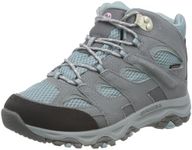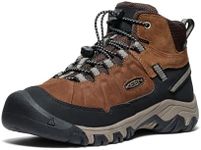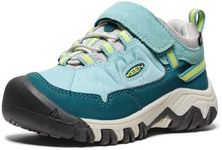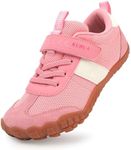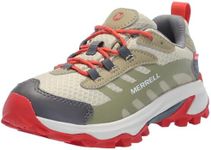Buying Guide for the Best Hiking Shoes For Children
Choosing the right hiking shoes for children is crucial to ensure their comfort, safety, and enjoyment during outdoor adventures. The right pair of shoes can make a significant difference in their hiking experience, preventing blisters, slips, and other discomforts. When selecting hiking shoes for children, consider their specific needs, the type of terrain they will be hiking on, and the duration of the hikes. Here are some key specifications to consider and how to navigate them to find the best fit for your child.Fit and SizeFit and size are the most important factors when choosing hiking shoes for children. A proper fit ensures comfort and prevents blisters and other foot problems. Children's feet grow quickly, so it's essential to measure their feet regularly and choose shoes that provide a little room for growth, but not too much to cause slipping. Look for shoes that fit snugly around the heel and midfoot, with enough space to wiggle their toes. It's best to try on shoes with the socks they will wear while hiking to get an accurate fit.
Support and StabilitySupport and stability are crucial for protecting children's developing feet and ankles, especially on uneven terrain. Hiking shoes should provide good arch support and a firm heel counter to keep the foot in place. For more challenging trails, consider shoes with higher ankle support to prevent sprains. If your child is hiking on well-maintained paths, low-cut shoes may be sufficient. Assess the type of hikes your child will be doing to determine the level of support needed.
TractionTraction refers to the grip the shoe provides on various surfaces. Good traction is essential to prevent slips and falls, especially on wet or rocky terrain. Look for shoes with a durable rubber outsole and deep, multi-directional lugs that offer excellent grip. For light trails, moderate traction may be sufficient, but for more rugged or slippery conditions, opt for shoes with aggressive tread patterns.
WaterproofingWaterproofing helps keep your child's feet dry in wet conditions, which is important for comfort and preventing blisters. Waterproof shoes are made with materials that repel water, such as Gore-Tex. If your child will be hiking in rainy or muddy environments, waterproof shoes are a good choice. However, for dry, hot climates, breathable shoes may be more comfortable. Consider the typical weather conditions and terrain of your hiking destinations when deciding on waterproofing.
WeightThe weight of the hiking shoes can affect your child's energy levels and comfort. Lighter shoes are generally more comfortable for shorter hikes and less strenuous trails, as they reduce the amount of effort needed to lift the feet. Heavier shoes, while potentially more durable and supportive, can be tiring for young hikers on long treks. Balance the need for durability and support with the importance of keeping the shoes light enough for your child to wear comfortably.
DurabilityDurability is important to ensure the shoes can withstand the wear and tear of hiking. Look for shoes made from high-quality materials, such as leather or synthetic fabrics, that can endure rough terrain and frequent use. Reinforced areas, like the toe cap and heel, add extra protection and longevity. While children may outgrow their shoes quickly, durable shoes can be passed down to younger siblings or friends, making them a worthwhile investment.
ComfortComfort is key to ensuring your child enjoys their hiking experience. Look for shoes with cushioned insoles and padded collars to provide extra comfort and reduce the risk of blisters. The shoes should also have good breathability to keep feet cool and dry. Encourage your child to walk around in the shoes before making a final decision to ensure they feel comfortable and supportive.


